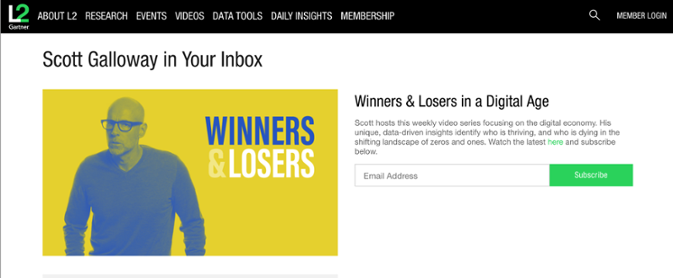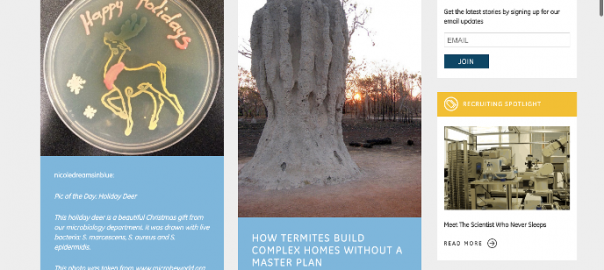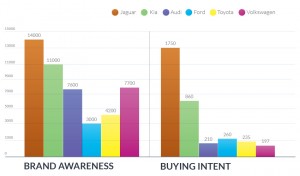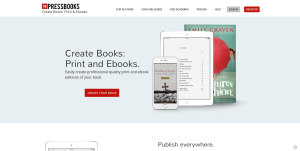— December 22, 2017

Thought leadership PR is especially necessary for the B2B business landscape. In an industry that often relies on expertise, credibility, and image, thought leadership builds a bridge of trust between B2B businesses and their buyers.
Before we touch on why thought leadership is necessary in B2B business, let’s first answer a fundamental, but important, question: What is thought leadership?
What is Thought Leadership?
Thought leadership provides a sheen of authority and reliability within an industry. Thought leaders are perceived as the go-to people in their industry, both for their expertise, as well as their reputation for excellence. They stand on the leading edge of industry trends, and sometimes even contribute to their formation. When thought leaders speak on an issue, people sit up and take notice.
Thought leadership is far from a popularity contest — it is about building a solid relationship of trust. For that reason, it does not hatch overnight. It is the result of demonstrated ability and dedication. It also requires marketing savvy to establish a thought leader’s brand. The result: Thought leaders are admired, trusted and respected by their peers.
Then why aren’t more skilled people thought leaders?
When we boil it down, a big part of thought leadership is about perception. You can have two people with equal skills and knowledge, but if one is always out there — and the other one hidden — the person who’s known will attract interest.
Thought leadership builds a bridge of trust between B2B businesses and their buyers
Let’s now consider a few reasons that thought leadership is so crucial in B2B industries.
5 Clear Benefits of Thought Leadership PR in B2B
1. Builds a Brand’s Reputation
As mentioned above, trust is a fundamental part of doing business as a B2B organization. Thought leadership is a crucial way to develop that trust. As decision makers witness first hand your industry expertise and authority, it reflects well on the brand you represent.
In fact, according to one study by Edelman and LinkedIn, 80% of executives admit that thought leadership content increases their trust of a brand.
2. Adds Emotional Appeal
B2B companies face a unique challenge. B2B products generally lack the emotional tug of a B2C product. Between a cloud security service and a beauty product, there’s no doubt which has more immediate emotional appeal.
In the B2B space, where price tags can be significantly higher, thought leadership adsd that emotional bond that motivates buyer engagement.
3. Boosts Your Value
As you build your thought leadership, it helps to differentiate you from your competitors and increases your desirability. B2B decision makers often seek the very best available, and they are willing to pay a hefty price to get it. Thought leadership creates a real, tangible difference in the value you hold.
As a result of this value, you can often demand a premium price for your products and services — and businesses you to be worth it.
4. Brings In New RFPs
RFPs, or requests for proposal, are a boost to any business. And as it turns out, there is a direct link between thought leadership and RFPs.
The same study from Edelman and LinkedIn discovered that 41% of executives and 37% of decision makers within a business are more likely to send an RFP when they see evidence of thought leadership.
5. Creates a Ripple Effect
Thought leadership creates a crescendo of interest that will reverberate across the industry. As you develop your reputation and people recognize you as a thought leader, more people will want to know about you. You may be asked to speak at events or to write articles and other materials. It’s a virtual circle that returns more and more interest your way.
Thought leadership creates a crescendo of interest that will reverberate across the industry
So now that we see the clear benefits of thought leadership, how can you create a solid thought leadership strategy? Let’s look at 5 principle ways that you can build your own reputation as an impactful thought leader.
How to Strengthen Your Thought Leadership Strategy
1. Create Content
Create an environment rich in thought leadership content where your audience can come time after time for reliable advice, trending news, and educational information. Dedicate a section of your website to a blog where you can post your content and interact with your audience.
Your content creation should not be limited to blog posts. Reach out and cultivate other forms of content, such as video, slideshares, case studies, and surveys that will further cement your position as a thought leader.
2. Leverage LinkedIn’s Powerful Platform
LinkedIn is one of the top networks to go for thought leadership content — especially in the B2B space. If your goal is thought leadership, you will want to start here.
The first place people will look to for thought leadership credentials is your profile and summary. There are a few expert ways you can make your profile stand out and draw people to you. These include:
- A clean headshot. Nothing fancy or extravagant. Just a simple shot of you that oozes with professionalism and personality.
- Be Original. There is only one you. Show people what makes you unique with your one-of-a-kind experiences, accomplishments, and viewpoints.
- Engage. Don’t just relay hard, cold facts about your professional life. Infuse your profile with personality and engage with your audience.
- Include content. In addition to your accomplishments, add content to your profile. Think slideshares, articles, and other content that shows your thought leadership ability.
Use LinkedIn’s special and powerful platform to publish your thought leadership content. If you choose to use content from your site, note that it originally appeared on your blog, and include a link to the original post. This protects you from being penalized by Google for duplicate content.
Use LinkedIn to its fullest potential by joining and engaging with industry-related groups. These groups are not the place to post purely self-promotional content. Instead, focus on helping group members. Pay attention to conversations, and only comment when you can add meaningfully to the conversation. Post content that is interesting and truly valuable to group members.
3. Encourage Thought Leadership as a Company Standard
Thought leadership doesn’t just reside with C-suite executives. It’s better, in fact, to have thought leaders at all levels of your company.
This serves two key purposes. One, it builds people’s confidence in all parts of your company. Second, if C-suite executives move on to other business opportunities, it doesn’t leave your company thought leader-less.
Encourage members of your team to develop their own ideas and to express them. Feature various members on your company blog and highlight their insights in newsletters and social media. Also, encourage them to publish on LinkedIn and other thought leadership platforms.
Try to attract other established thought leaders to join your company. Their status as a thought leader will rub off on your brand’s reputation and may even help other budding thought leaders within your company to reach that status as well.
Influence & Co has done this very well — as evidenced by its website. While John Hall, the CEO, is a thought leader in his own right, he encourages others at all levels of his company to establish their own thought leadership. When you read the firm’s blog, or watch its video introducing the company, you are struck with the team’s expertise. This company-wide thought leadership inspires confidence in the brand as a whole.

4. Be Helpful
Helpfulness is one of the fundamental facets of thought leadership. If you don’t genuinely want to use your knowledge and expertise to help others, you will not go very far as a thought leader.
Look for ways that you can assist your audience. Whether this means predictions for where an industry is headed or advice on a common industry problem, be the first person people turn to for what they need.
Pay attention to what forms of content your audience prefers. Most people are visually-oriented, so including videos, infographics, and slideshares as part of your content can boost your helpfulness ratio.
Scott Galloway, CEO of L2, is a great example of being helpful. His content, including YouTube videos, is engaging and geared toward educating his audience to digital trends and their impact. His engaging presence and wit make for a dynamic watch.

5. Be Consistent
While you may hesitate to call it a “tactic,” consistency is a major part of thought leadership. Create a calendar, or plan, that will keep you on track, creating a regular stream of thought leadership content.
This consistency should also be evident on LinkedIn and other social media networks. If people don’t feel engaged with you, you’ll lose part of that “go-to” quality that makes you a thought leader.
The Txchnologist — and no, that’s not a typo — is a microsite powered by GE. This online library of content is a great example of what consistency can do to cement thought leadership. From articles and interviews on what’s impacting the realm of healthcare technology to a mesmerizing GIF of a beating heart, GE regularly churns out inspiring thought leadershipquality content.

A Few Things to Remember…
- Thought leaders are the go-to authorities in their industry and relied on for their expertise
- Thought leadership has the ability to build a brand’s reputation and increases sales
- Use your content strategically to cement yourself as a thought leader
- Be helpful and consistent in your thought leadership strategy, including content creation and engagement on social networks like LinkedIn.
Business & Finance Articles on Business 2 Community
(68)






